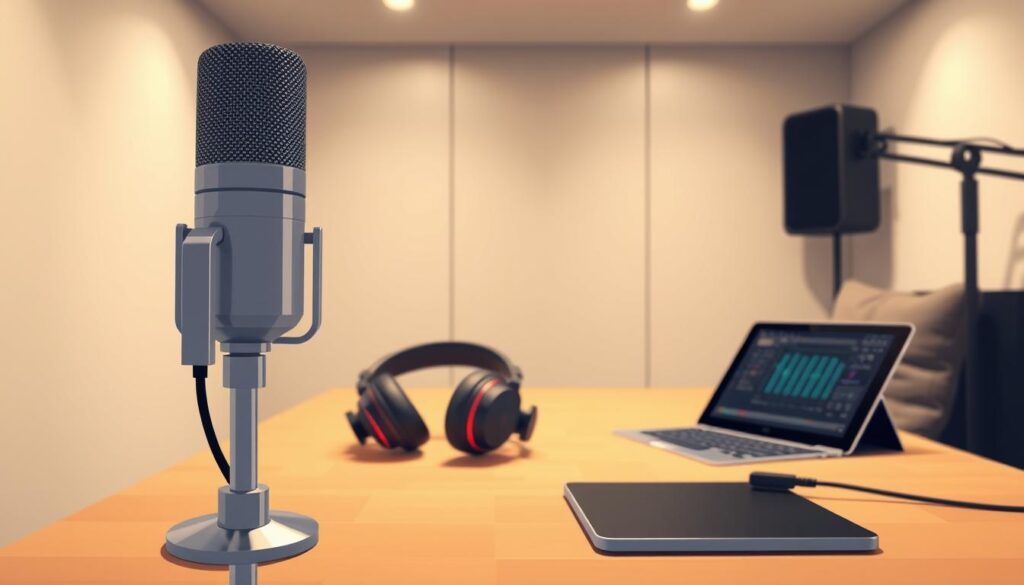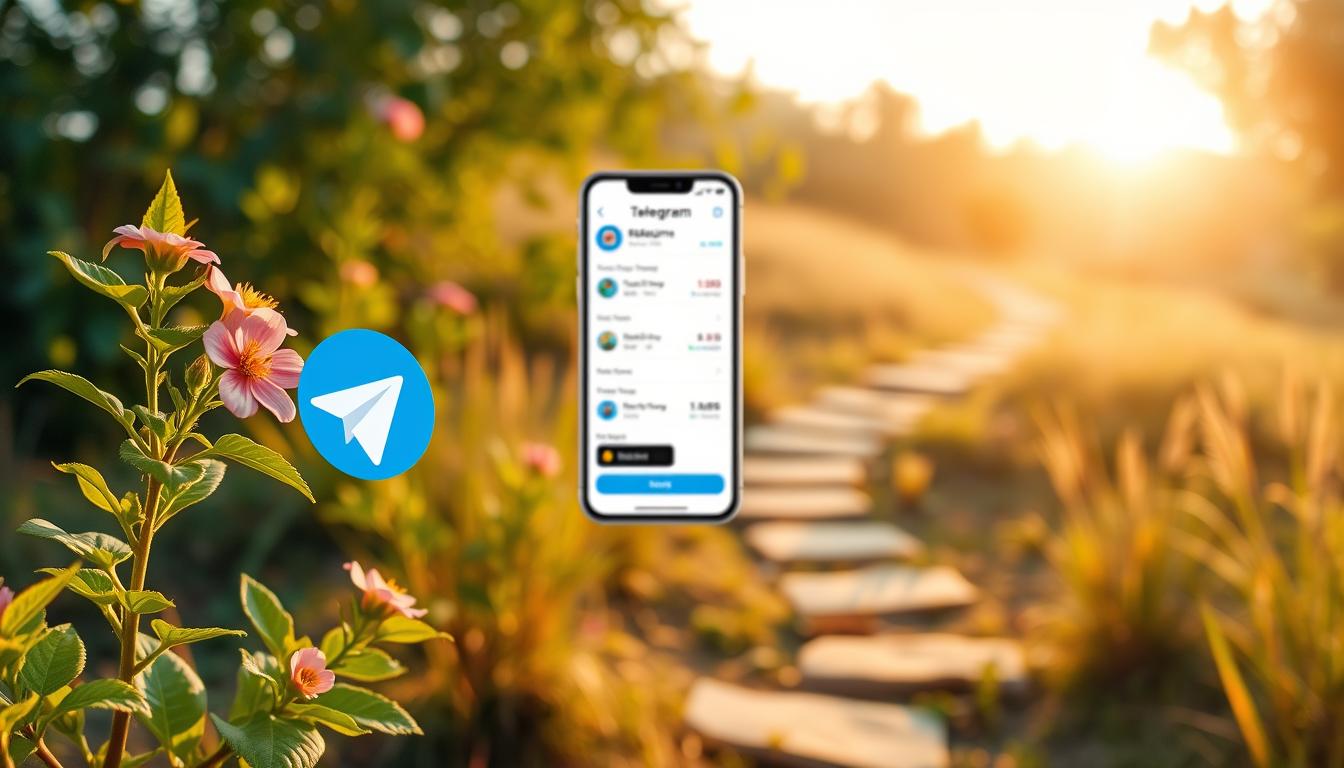Short-form audio strategy is transforming social feeds by leveraging "micro-audio" clips to capture attention in a scroll-heavy world. This approach capitalizes on shifting Gen Z listening habits and high social audio engagement rates. By integrating programmatic audio advertising, Dynamic Ad Insertion (DAI), and contextual targeting, brands can drive superior audio ad recall stats while effectively tracking ROI through omnichannel attribution.
Surprising fact: more than 135 million Americans listen monthly, and digital audio ad spending has topped $13 billion — a shift that is changing social strategies fast.
We see budgets move from old-school radio to nimble platforms that let you target and measure. This makes micro-podcasting clips a powerful tool for small businesses and social beginners.
You’ll get a clear view of how digital audio is reshaping paid media and social feeds. We explain why this format shows real growth across Spotify, Apple Music, Pandora, and in-feed posts.
Why it matters: short clips work well when people multitask or commute. They scale without heavy production and can drive discovery, deeper listening, and conversions.
Key Takeaways
- Digital audio is driving new ad dollars and audience habits.
- Short-form clips fit social feeds and help small businesses test affordably.
- Blend radio, podcasts, and streaming for reach and precision.
- Programmatic placements and better measurement make this channel scalable.
- Short clips perform when people are on the move or multitasking.
- We’ll give a simple, data-backed blueprint to scale what works.
The state of listening now: where social meets digital audio
Short clips now meet people where they scroll, turning quick hooks into real listening moments. Digital sound reaches 76% of Americans 12+ and nearly half tune in monthly — up 12% year over year. That growth makes short-form work especially well on social.
Short-form audio’s rise on social platforms and why it sticks
Short clips thrive because they respect time and match micro-moments. On Instagram, TikTok, YouTube Shorts, and LinkedIn, 15–60 second clips give fast value and nudge people toward full episodes or playlists, driving impressive social audio engagement rates.
Why it works: clear intros, on-screen text, and waveform visuals let posts travel even when muted. People sample a voice first, then commit. Brands use creator-style storytelling and simple CTAs like “Save for later” or “Listen to the full interview” to convert scrollers into listeners.
Defining the format spectrum: clips, highlights, and snackable spoken-word
The core spectrum is simple: 15–60s clips, 60–120s highlights, and short spoken-word explainers with captions for autoplay. This format, often called micro-podcasting, uses native tools — from Spotify Canvas to YouTube timestamps — to keep discovery seamless across streaming and social platforms.
- Tip: Start with 3–5 recurring clip series (quick tips, myth-busting, highlights).
- Match format to the moment: a 30s hook for scrolling, a 90s highlight for deeper interest.
Audio content trends shaping 2024-2025

Listening habits are stretching into longer daily sessions, giving brands broader windows to engage. This shift matters for small teams and social beginners because you can test short clips and longer episodes without heavy production.
Spoken-word and podcasts surge: engagement and time-spent milestones
Spoken-word formats and podcasts are lifting overall listening. Digital audio listeners average 4 hours and 49 minutes a day, creating deeper engagement windows.
Edison Research shows 76% of Americans 12+ use digital audio and monthly podcast listening rose 12% year over year. These numbers point to a growing, reachable audience.
Smart speakers, smartphones, and in-car streaming expand access
Nearly 100 million U.S. homes now have smart speakers, up 26% since 2020. More people also stream in cars and on phones, so friction for discovery drops.
That means your message can meet listeners at work, home, or in transit. Use platform tests to find where your audience lives.
The audio flywheel: creators, consumers, advertisers, and tech reinforce growth
The cycle is simple: creators make more; consumers listen longer; advertisers invest; platforms add features. This loop compounds reach and return.
- Recall wins: studies show stronger memory signals—audio ads can lift long-term recall versus TV and display.
- Measure the basics: watch monthly podcast listeners, smart speaker installs, and completion rates to spot momentum.
- Where to test: platforms like Spotify, Apple Podcasts, Pandora, and SiriusXM give quick feedback on format length and placement.
For more on recent listening patterns, see the Nielsen listening report on audience and time spent.
Radio endures while streaming audio ascends

Even as streaming rises, radio remains the backbone of regional reach for local advertisers. Terrestrial radio still captures large daily audiences, especially during commute time. That makes it ideal for broad awareness and top-of-funnel work.
Balancing broad reach with digital targeting and measurement
Use radio for scale and streaming for precision. Radio delivers dependable reach among older demographics and daily commuters. Streaming audio offers precise targeting, frequency control, and measurable outcomes.
Pair them to cover mass audiences and niche listeners efficiently. Run a quick awareness burst on radio, then retarget engaged listeners via streaming placements using omnichannel attribution to track the full journey.
- Match by demographics: younger audiences spend more time with podcasts and ad-supported streaming, while 35+ lean on radio.
- Optimize by daypart: use radio logs to time streaming spots that mirror real-world listening rhythms.
- Test lift: run identical messaging on both channels to compare recall and adjust creative.
“Balance keeps reach continuous while you shift budgets to where measurement and targeting pay off.”
Advertising in audio: from programmatic buying to superior recall

Programmatic audio advertising now turns scattered inventory into a single, optimizable pool for advertisers. That lets you cap frequency, test creatives fast, and align goals across screens.
Programmatic audio and cross-channel lift with CTV
Buy inventory in one DSP and you simplify optimization. You can set frequency caps and share conversion goals across radio, streaming, and CTV.
“Combining digital placements with CTV lifted message association by 14% and aided recall by 12%.”
Precision targeting: contextual alignment, demographics, and listening history
Use contextual targeting to match moments—sleep playlists for mattresses or focus mixes for B2B tools. Target by demographics and listening history to reach likely buyers without wasting impressions.
Brand impact: higher ad recall and emotional connection versus other media
Studies show streaming ads can be more memorable than other ad types, delivering superior audio ad recall stats. Tie platform data back to your CRM. Use clean rooms or privacy-safe IDs to link ads to purchases and measure real impact on consumers.
- Start with programmatic buying to unify supply and cap frequency.
- Pair streaming placements with CTV to lift recall and association.
- Mix ad styles: host-read for trust, announcer-read for scale, dynamic creative for fast tests.
- If you run radio, keep it for reach and add streaming to capture measurable frequency.
Privacy-forward strategies in a cookieless world

A cookieless future puts first-party relationships at the center of smart targeting. Build direct ties with your listeners through signups, purchases, and podcast subscribers. These seed lists let you scale with look-alikes while keeping privacy intact.
Use programmatic buying that supports contextual and cohort-based signals. That way you can deliver relevant ads without personal identifiers. Clean rooms help you link conversions to campaign logs safely.
- Collect: email signups and subscriptions to create first-party data.
- Scale: rely on look-alikes and cohort models rather than invasive IDs.
- Test: keep targeting simple—genre, device, daypart—and avoid overfitting.
Ask listeners for clear consent and trade value—early access or discounts—to grow compliant remarketing pools. Give advertisers confidence with transparent taxonomies and short retention windows in ad ops.
“Privacy-first audience modeling delivers measurable reach while respecting user rights.”
Keep creatives fresh and use server-side insertion to maintain ad quality and honor choices. This approach balances regulation, performance, and trust as you run audio campaigns into the future.
Podcasting’s powerful potential: content, audiences, and formats

Podcasting now pairs intimate storytelling with measurable returns, making it a top channel for brands that want both reach and response.
Growth is real: podcasts grew 47% in five years and reached 135 million monthly U.S. listeners in 2024.
Generational dynamics
Millennials and Gen Z still lead podcast listenership, shaping voice and format expectations. In particular, distinct Gen Z listening habits—favoring authenticity and speed—are redefining how content is structured.
But ages 35–54 show the fastest growth. That group brings household influence and buying power.
Monetization mix
Mix methods: host-read endorsements drive trust and direct response.
Dynamic Ad Insertion (DAI) keeps ads relevant per episode. Programmatic podcast advertising simplifies buying at scale.
- Define your core podcast listener and nearby segments to tailor intros and calls to action.
- Use platform analytics to find drop-offs and protect completion rates.
- Test recurring segments and add YouTube-native video to expand reach while keeping audio-first quality for commuters and runners.
“Podcast ad revenue surpassed $1.4 billion and keeps growing, proving this is a monetizable medium.”
From social snippets to subscriptions: the business playbook

A deliberate snippet strategy turns casual scrollers into loyal subscribers over time.
Start by using short-form clips to seed discovery. Post regular hooks on platforms like YouTube Shorts and Instagram Reels. These clips point listeners to full episodes where loyalty forms.
Offer a clear value ladder: free highlights, full episodes, then a paid tier with bonus segments, early access, and community perks. This structure converts interest into recurring revenue.
Practical steps to monetize and measure
Keep a consistent posting rhythm and simple templates so formats are easy to produce weekly.
- Test price points and benefits for subscriptions. Keep onboarding friction-free.
- Track number changes in saves, shares, and completion rates to spot clips to boost.
- Package inventory for advertisers as bundles: social clips, mid-roll mentions, and newsletter spots.
| Stage | Goal | Metric | Example |
|---|---|---|---|
| Discovery | Drive clicks to episode | Shares & saves | 30s snippet on TikTok |
| Engagement | Increase listens | Completion rate | 90s highlight on IG |
| Monetization | Convert to paid | Subscriptions | Patreon bonus segment |
Use UTM links and vanity URLs in captions and show notes to see which channels drive trials and paid conversions. Repurpose transcripts into blog posts and emails to grow search visibility and drive steady traffic.
Conclusion
Move from testing to scale by tracking small wins and proving lift in weeks, not months. Start simple: run short clips, measure completion and conversions, then expand placements on streaming and radio to match demographics and dayparts.
We recommend blending programmatic buys with privacy-safe first-party lists so advertisers see real impact. Use study-backed metrics—recall and purchase intent—to brief stakeholders and justify more spend on digital audio and audio advertising.
Final step: set a 90-day plan, test platforms, and tune creative to the listening moment. Do this and you’ll grow audience, prove ROI, and own more of audio consumption in 2025.
FAQ
Why is short-form audio becoming so popular on social platforms?
Short-form spoken clips fit how people use social apps today: quick, mobile-friendly moments that are easy to share and engage with. Platforms like TikTok, Instagram, and X (formerly Twitter) promote snackable clips and highlights that drive discovery and make creators’ long-form material more visible. This format lowers friction for listeners and boosts time spent across feeds.
How do clips and highlights differ from traditional podcast episodes?
Clips and highlights are brief excerpts—often 15–90 seconds—designed for immediate engagement. Full podcast episodes deliver deeper storytelling and longer listening sessions. Use clips to attract new listeners and full episodes to build loyalty and ad inventory. Both formats support different stages of the audience funnel.
What listening behaviors are shaping the landscape in 2024–2025?
People are using a mix of smartphones, smart speakers, and connected cars to listen more often and in more contexts. Consumption has shifted toward on-demand and streaming services, while talk radio still reaches large audiences. This blended behavior creates multiple entry points for creators and advertisers to connect with listeners.
How does radio still fit into a digital-first world?
Radio remains valuable for mass reach and appointment listening, especially during commutes. Streaming platforms add measurement and targeting capabilities radio lacks, so many advertisers combine both to balance scale with precision. The result is broader reach plus better attribution and optimization.
What advantages do audio ads offer compared with other media?
Audio ads often deliver higher recall and stronger emotional resonance because spoken messages create a personal, focused experience. Host-read endorsements and well-timed creative can drive action. When paired with programmatic buying and cross-channel strategies, audio ads also offer measurable lift versus baseline metrics.
How does programmatic buying work for spoken ad inventory?
Programmatic audio uses automated marketplaces to buy inventory across streaming services and podcast networks. Buyers target listeners by demographics, contexts, or listening behavior and optimize in real time. This approach scales campaigns while maintaining relevance and cost efficiency.
Can advertisers target effectively without relying on third-party cookies?
Yes. Brands use privacy-forward signals like contextual alignment, first-party audience data, device-level IDs, and publisher cohorts. These methods protect user data while enabling relevant messaging. Transparency and consent remain central to trustworthy targeting.
Which podcast ad formats perform best for monetization?
Host-read ads often show the strongest engagement and credibility. Dynamic ad insertion (DAI) enables targeted, up-to-date creative, while programmatic podcast advertising improves scale and targeting. A blended strategy—mixing host-read with DAI and programmatic—maximizes revenue and reach.
Who is driving podcast growth by age group?
Millennials and Gen Z lead listening frequency and discovery on social platforms, while the 35–54 cohort shows rapid growth in consumption and ad responsiveness. This generational mix opens opportunities for formats and messaging tailored to each group’s habits.
How do short-form snippets convert into paid subscriptions or longer engagement?
Short clips act as discovery hooks that prompt listeners to follow or seek full episodes. Consistent distribution of high-value clips across social channels, paired with calls to action and gated bonus material, can convert casual listeners into subscribers and loyal fans.
What role do smart speakers and in-car systems play in expanding reach?
Smart speakers and in-dash streaming create hands-free, high-attention listening moments at home and on the road. They extend reach to users who prefer voice-driven experiences and offer new placement opportunities for advertisers and publishers to capture longer sessions.
How should small businesses start with spoken-word advertising?
Begin with clear goals—brand awareness or direct response—then test short, authentic scripts that mirror conversational speech. Use measurable placements on streaming platforms or podcast sponsorships, track conversions, and scale what performs. Focus on relevance and a simple call to action.
Are measurement and attribution improving for this medium?
Yes. Platforms and measurement partners now offer impression-level tracking, lift studies, and cross-channel attribution that tie listening to outcomes. Combining first-party data with platform analytics helps you measure reach, frequency, and downstream actions more accurately.
How do creators and advertisers work together in the “audio flywheel”?
Creators produce engaging material that attracts listeners. Platforms surface that work and provide monetization tools. Advertisers fund creators through sponsorships and programmatic buys, which supports better production and audience growth. This virtuous cycle accelerates scale for everyone involved.
What best practices improve ad recall and emotional impact?
Use authentic, conversational messaging and leverage host-read endorsements when possible. Align ads with relevant program themes and listener contexts. Keep creative concise, use clear calls to action, and test different placements to see which formats resonate most with your audience.



